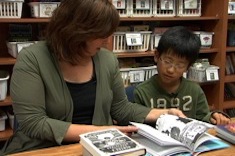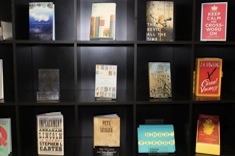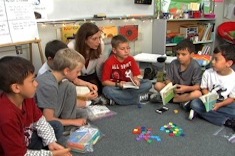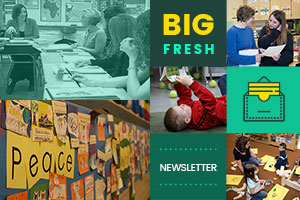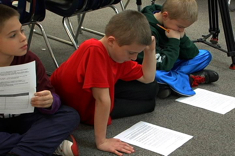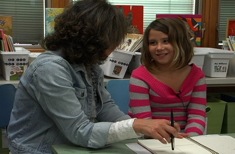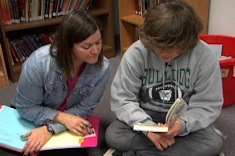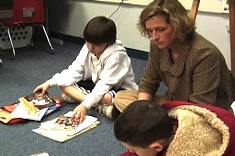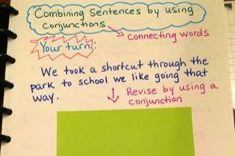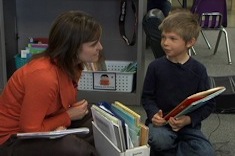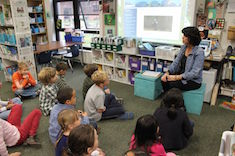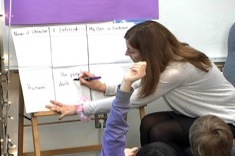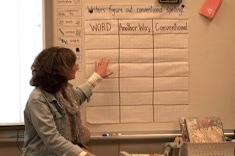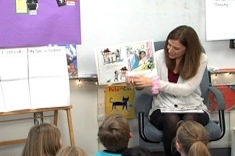Library
Choice Literacy Articles & Videos
The Choice Literacy library contains over 3,000 articles and 900 videos from 150+ contributors. Classic Classroom and Literacy Leadership subscribers have access to the entire library. Content is updated continuously, with five to six new features published each week.
Latest Content
Sentence Combining in Workshops
Heather Rader has strategies for using sentence combining in literacy workshops.
More Sophisticated Mysteries: Conferring with Yuki
Franki Sibberson confers with fourth grader Yuki to expand his reading options into more complex series and mysteries.
The Power of Mystery Series for Teens and Tweens
Ruth Shagoury shares her top picks of mystery series for teens and tweens.
A Tool Worth Exploring: Sentence Combining
Heather Rader begins a new series on sentence combining, an alternative to traditional drill and kill grammar instruction.
Conversational Skills in a Boys Book Club
Linda Karamatic observes a second-grade boys book club using tokens as a cue for turn taking, and then discusses her observations with the students.
Deeper Writing: The Story Behind the Selfie
Gretchen Taylor taps into a cultural phenomenon with her seventh-grade writers to help them deepen their writing and reflection.
The Big Fresh February 8, 2014 Keeping It Short
Short texts are the focus of this week’s Big Fresh.
Making the Most of Short Texts
Mary Lee Hahn melds short texts with the Common Core in this first article in a two-part series.
“Article of the Week” Activity in Fourth Grade
Tony Keefer finds that the article-of-the-week activity (adapted from Kelly Gallagher's work) is a good way to integrate short shared texts into his fourth-grade literacy workshop.
Collecting Ideas in the Writer’s Notebook
Ruth Ayres confers with third grader Jade about the importance of the “collecting” phase for writers.
no i don’t think you need to shave
Katie Baydo-Reed lays down the law for her eighth graders about capitalization and the use of periods, with excellent and hilarious results. This piece will make you laugh out loud at the gaps between the ways teachers and teenagers think.
The Big Fresh February 1, 2014 Strength and Weakness
We consider middle school literacy in this week’s Big Fresh.
Previewing a Book with an Eighth Grader
In this brief conference, Katie Baydo-Reed chats with an eighth grader as he previews The Wednesday Wars and makes connections to the main character.
Multiple Strategies for Kindergarten Readers
Tammy Mulligan explains why it’s important to encourage kindergarten students to use other strategies beyond “sound it out” in this demonstration small group.
Children’s Literature for the Olympics
The Olympics are just around the corner, and Sarah Klim has suggestions for read alouds in a new booklist.
Explanatory Grammar Moves: Getting Verbal with It
Jeff Anderson concludes his series on explanatory grammar moves by exploring participles, included in the Common Core eighth-grade standard covering the use of verbals.
Making Classics Relevant for Middle School Students
Jennifer Schwanke helps middle school students make connections between classics and their current reading.
Middle School Design: Cozy Reading Spaces
Katie Doherty has design tips for creating cozy reading spaces in middle school classrooms where there is no space or budget for a whole-class rug area.
15 Minutes on Friday: Writing on Demand with Students
Mary Lee Hahn finds 15 minutes of writing on Friday builds fluency and confidence in her fifth-grade students, and gives her a wealth of formative assessment data at the same time.
Jennifer Serravallo on Formative Assessment (PODCAST)
Franki Sibberson chats with Jennifer Serravallo about formative assessment in this podcast. Jennifer is the author of The Literacy Teacher’s Playbook, Grades 3-6: Four Steps for Turning Assessment Data into Goal-Directed Instruction.
The Big Fresh January 25, 2014 The Unconference
We look at formative assessments in this week’s Big Fresh.
Conferring with Sebastian
Katie DiCesare chats with first grader Sebastian in this one-minute conference, then shares her reflections on where Sebastian might go next in his reading.
Formative Spelling Assessment
Max Brand has developed templates for grades K-2 and 3-5 to use for formative spelling assessments.
Rereading and Retelling to Inferring: Part 2
Linda Karamatic uses texts her second graders already know to build their inferring skills as they construct a chart together.
Liberty and Dystopia: February Literacy Contracts
Megan Ginther and Holly Mueller focus their February Literacy Contracts on dystopias.
The Big Fresh January 18, 2014 Reading a Community
Anchor charts are the focus of this week’s Big Fresh.
Smarter Charts (PODCAST)
In this podcast, Franki Sibberson chats with Kristi Mraz and Marjorie Martinelli (the authors of Smarter Charts) about ways teachers can keep anchor charts in their classrooms fresh and useful.
Words Chart Minilesson
Ruth Ayres develops a word chart in this brief minilesson with second graders.
Exploring Inferring with Second Graders: Part 1
Linda Karamatic uses a read aloud to launch a group activity to build understanding of inferring.
The Shape of Stories
Mary Lee Hahn explores story structure with her fifth-grade students. This is a terrific activity for helping older students understand increasingly complex story structures as they move through the intermediate grades.
Browse Content By
Type
Category
- Assessment Tools
- Big Fresh Archives
- Booklists
- Choice Numeracy
- Classroom Design
- Common Core
- Community Building
- Conferring
- Content Literacy
- Digital Literacy
- English Language Learners
- Equity
- Family Relations
- Free Samples
- Guiding Groups
- Leadership
- Literacy Coaches
- Mentor Texts
- Minilessons
- New Teacher Mentors
- Podcasts
- Poetry
- Quote Collections
- Reading Strategies
- Self Care
- Struggling and Striving Learners
- Talking and Listening
- Teacher Study Groups
- Teaching Reading
- Teaching Writing
- Word Study and Vocabulary
Author
- Melissa Quimby
- Nawal Qarooni
- Gwen Blumberg
- Julie Cox
- The Lead Learners
- Hannah Tills
- Josie Stewart
- Ruth Metcalfe
- Mallory Messenger
- Becca Burk
- Jodie Bailey
- Vivian Chen
- Mary Brower
- Tiffany Abbott Fuller
- Stephanie Affinito
- Ruth Ayres
- Leigh Anne Eck
- Heather Fisher
- Shari Frost
- Julie Johnson
- Suzy Kaback
- Gigi McAllister
- Shirl McPhillips
- Melanie Meehan
- Cathy Mere
- Debbie Miller
- Tara Barnett and Kate Mills
- Tammy Mulligan
- Dana Murphy
- Bitsy Parks
- David Pittman
- Brenda Power
- Heather Rader
- Matt Renwick
- Mandy Robek
- Christy Rush-Levine
- Gretchen Schroeder
- Jen Schwanke
- Brian Sepe
- Katherine Sokolowski
- Stella Villalba
- Jennifer Vincent
Grade Level
Choice Literacy Membership
Articles
Get full access to all Choice Literacy article content
Videos
Get full access to all Choice Literacy video content
Courses
Access Choice Literacy course curriculum and training


